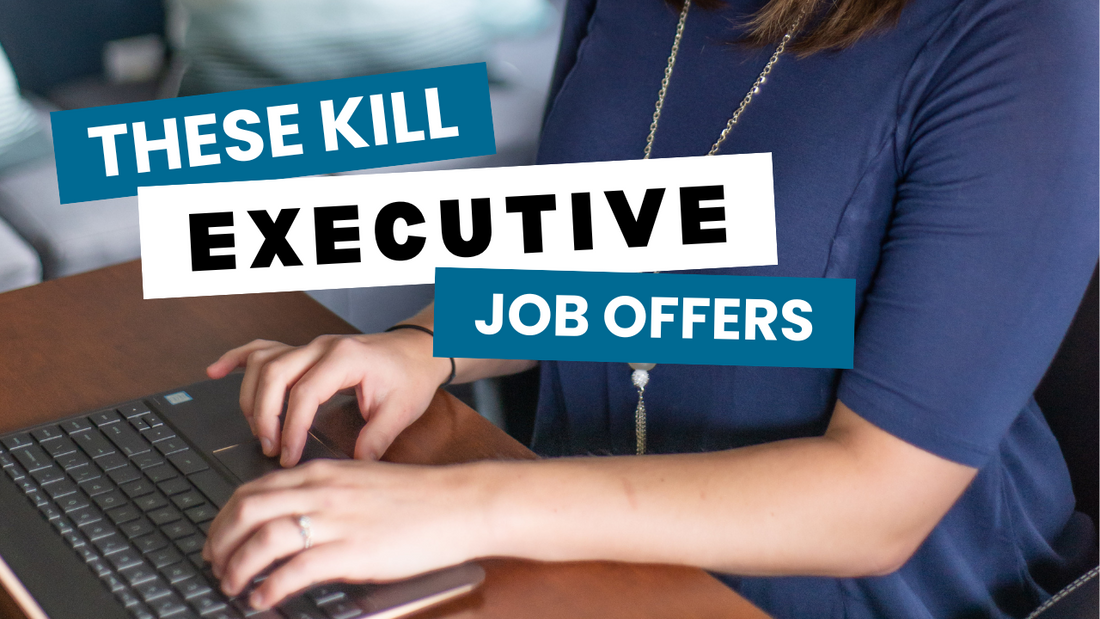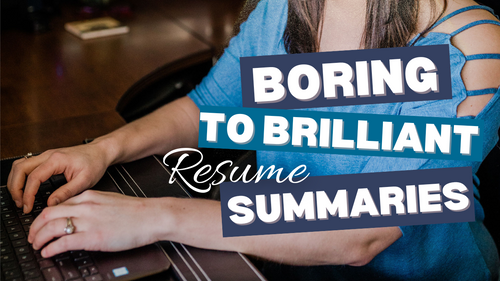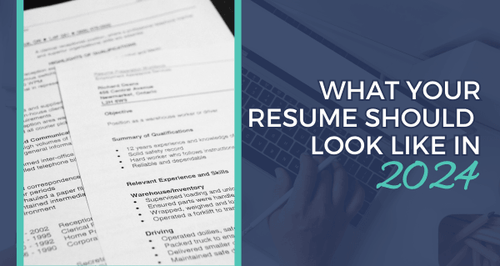
The Harsh Truths About Executive Resumes: What Not to Do
Ever feel like your resume should speak for itself, but it just… doesn't?
You’ve led teams, driven growth, and shaped strategy—but when it comes to landing that next executive role, your resume might be silently working against you.
Let’s change that.
Because here’s the deal—most executive resumes are full of fluff, outdated formatting, and generic statements that fall flat. And that’s not your fault. You’ve been doing the work, but now it’s time to make sure your resume reflects it.
Whether you're targeting a Director, VP, or C-level role, here are the most common mistakes that keep high-achievers stuck in the “maybe” pile and how to fix them fast.
This blog contains affiliate links, meaning I may receive a small commission (at no cost to you) if you subscribe or buy something through the links I share. I only share links to products or services that I use myself or absolutely love!
Mistake #1: Saying You're “Results-Oriented” Without Showing Results
You’ve probably seen (or written) this kind of line before:
"Strategic, results-driven leader with strong business acumen..."
Sounds impressive, right?
Not so fast.
At the executive level, hiring managers already expect you to be strategic. They’re not looking for buzzwords—they’re looking for proof.
Instead of padding your resume with vague adjectives, focus on hard numbers and concrete wins that back up your leadership style.
Try this instead:
"Led $10M revenue growth by expanding global markets into EMEA."
"Reduced operational costs by 18% through supply chain restructuring."
Numbers beat adjectives every time.
Mistake #2: Listing Responsibilities Instead of Achievements
Let’s be honest... “Managed a team of 100+ employees” is not exactly groundbreaking.
Anyone reading that can’t tell if you inspired innovation or just kept things from falling apart.
What really matters is what happened under your leadership.
Ask yourself:
- What improved?
- What changed?
- What results did my team deliver?
Here’s what that looks like in action:
"Improved team productivity by 35% after introducing Agile workflows and performance incentives."
That’s not just managing—that’s driving measurable impact.
Mistake #3: Starting With a Generic, Buzzword-filled Summary
That paragraph at the top of your resume? It’s your elevator pitch, not a dumping ground for cliches.
Your resume summary is prime real estate. And sadly, most people waste it.
If yours reads like a LinkedIn headline from 2009 (“Dynamic, visionary leader with a passion for innovation…”), it's time for a refresh.
Instead, get laser-clear on what kind of executive leader you are and what business outcomes you deliver.
A strong summary might say:
"Growth-focused COO with 10+ years of success scaling e-commerce brands. Spearheaded two exits and built high-performing teams across North America and EMEA."
See the difference? Specific, compelling, and skimmable.
Mistake #4: Outdated Formatting That Screams “Last Updated in 2012”
Still rocking Times New Roman and an Objective Statement?
Hate to break it to you, but that’s an instant credibility killer.
Hiring teams at the executive level are looking for a polished, modern presentation. Not a high school book report.
Keep your format clean and easy to skim:
- Use modern fonts like Calibri or Helvetica.
- Ditch dense paragraphs and use white space generously.
- Use bold section headers so decision-makers can find what they need fast.
And please—skip the “Career Objective” section. Companies care more about what you can do for them than what you want next.
Mistake #5: Not Tailoring Your Resume for the Job
You know one size doesn’t fit all in business, so why use a one-size-fits-all resume?
Too many executives recycle the same document for every opportunity. But what works for a high-growth SaaS startup won’t cut it for a company focused on operational efficiency.
Every company has different priorities. Your resume needs to reflect theirs.
To tailor effectively:
- Scan the job posting for key themes—growth, turnaround, innovation, cost savings.
- Mirror those priorities in your summary and throughout your bullet points.
- Emphasize relevant outcomes. If the job is all about streamlining operations, lead with your Lean Six Sigma wins and not your M&A history.
Tailoring shows you get it—and that you're not just looking for any role, but this one.
Conclusion
If one (or all) of these mistakes made you wince, don’t panic. You’re not alone—and now, you’ve got a clear path forward.
✅ Focus on outcomes, not fluff.
✅ Lead with clarity and data.
✅ Make your resume easy to read and easy to remember.
✅ Align your message with the role you want.
Because at the executive level, your resume isn’t just about experience. It’s about the story you tell and the results you can deliver.
So go ahead—open up that resume file, roll up your sleeves, and make some strategic edits.
You’ve got the track record, now make sure your resume proves it.
Related Articles
-

26 Interview and Offer-winning Resume Tips for 2026 and Beyond
Upgrade your resume for 2026 with tips that work from design to keywords and strategies that get interviews. Discover what to fix now and stand out fast!
-

The Perfect Resume Length: One Page, Two Pages, or More?
Confused about the ideal resume length? Discover when to use 1, 2, or even 3+ pages plus get tips to highlight your value and land more interviews.
-

Resume Skills That Get You Hired: What To Include (And What To Skip!)
Discover the top resume skills employers want to see on your resume in 2025. Read or watch to learn how to showcase them to stand out and land more interviews.
-

How To Transform Your Resume Summary From Boring To Brilliant
Transform your resume summary from generic to job-winning! Learn how to write a standout branding statement that grabs attention and lands interviews.
-

Breaking Barriers: A Guide to Empowering Women in Manufacturing Leadership
Guest contributor Sadie Smith shares this comprehensive guide on how women can reshape the manufacturing industry landscape with actionable insights.
-

The Best Resume Tips for Recent Law School Graduates
Guest contributor Luke Bell shares practical resume tips to help recent law school graduates make a lasting impression on potential employers.
-

What Employers Look For In A Resume Skills Section
Learn which key components of an effective Skills section can indicate to resume screening software and the recruiters behind it which skills are your most recent, relevant, functional job-related skills.
-

What Your Resume Should Look Like In 2024
This comprehensive resume guide shares what the most common resume sections are and what your resume should look like in 2024.
-

Is Jobscan Worth It? Jobscan Review (2024 Update)
Have you heard of Jobscan? Learn more about this keyword analysis tool for job seekers, what it costs, and what Certified Resume Writers both love and hate about it in this in-depth product review.
-

How To Showcase Transferable Skills And Your Value For A Career Transition
Recognizing the significance of transferable skills is key to successfully showcasing one's potential in the face of change.
-

How To Showcase Achievements In Your Cover Letter
Learn how to turn your accomplishments into a compelling personal narrative that showcases the results an employer can expect from you.
-

Why You Should Avoid Resume Builders
Online resume builders are an enticing resume resource, but as a Certified Resume Writer who has tried them out, I recommend avoiding them.
-

ChatGPT Review: Resume Writing Edition
How useful is ChatGPT in crafting a resume that lands interviews and job offers? This review by a Certified Resume Writer isn’t what you’d expect.















